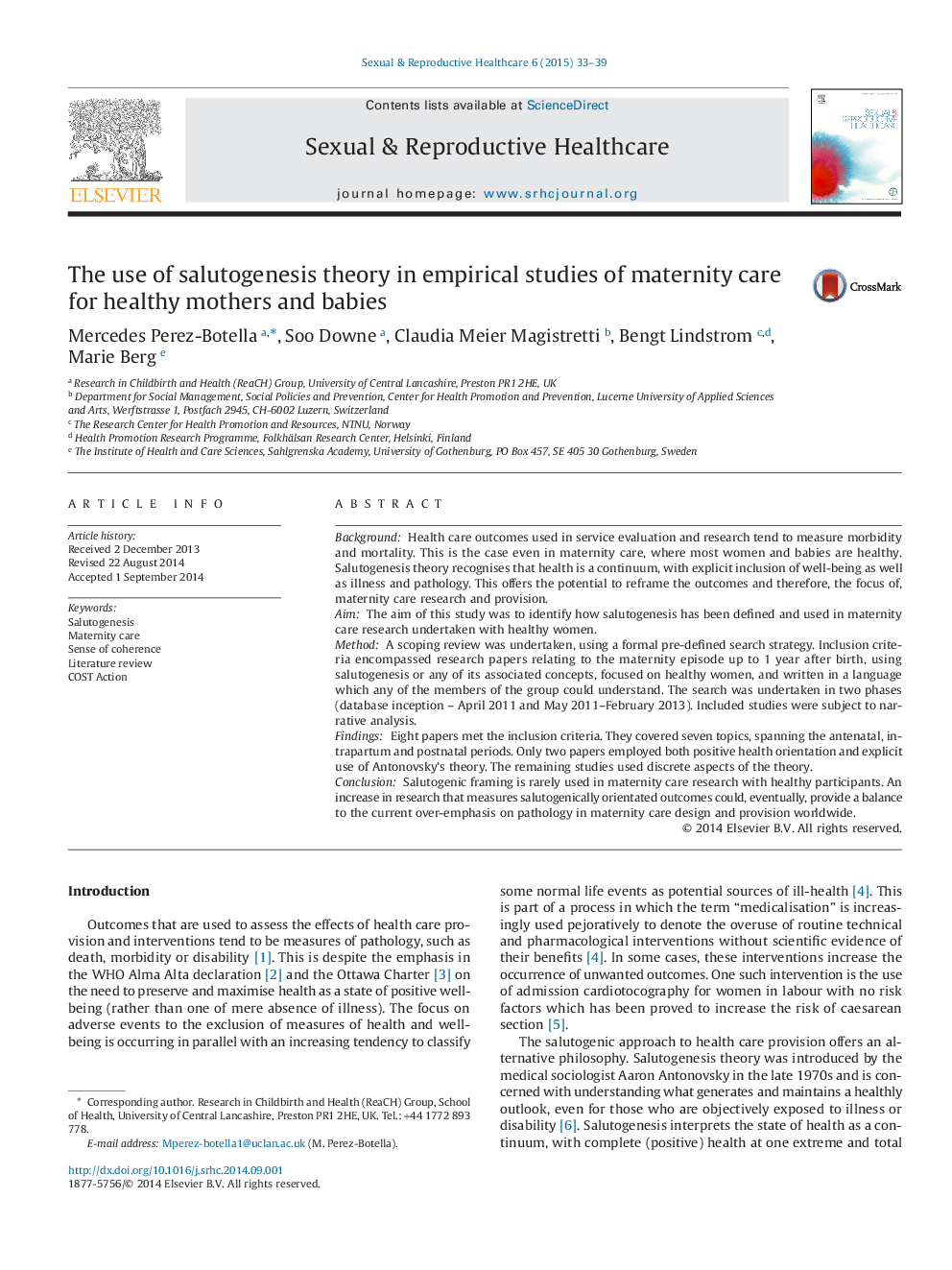| Article ID | Journal | Published Year | Pages | File Type |
|---|---|---|---|---|
| 2635937 | Sexual & Reproductive Healthcare | 2015 | 7 Pages |
BackgroundHealth care outcomes used in service evaluation and research tend to measure morbidity and mortality. This is the case even in maternity care, where most women and babies are healthy. Salutogenesis theory recognises that health is a continuum, with explicit inclusion of well-being as well as illness and pathology. This offers the potential to reframe the outcomes and therefore, the focus of, maternity care research and provision.AimThe aim of this study was to identify how salutogenesis has been defined and used in maternity care research undertaken with healthy women.MethodA scoping review was undertaken, using a formal pre-defined search strategy. Inclusion criteria encompassed research papers relating to the maternity episode up to 1 year after birth, using salutogenesis or any of its associated concepts, focused on healthy women, and written in a language which any of the members of the group could understand. The search was undertaken in two phases (database inception – April 2011 and May 2011–February 2013). Included studies were subject to narrative analysis.FindingsEight papers met the inclusion criteria. They covered seven topics, spanning the antenatal, intrapartum and postnatal periods. Only two papers employed both positive health orientation and explicit use of Antonovsky's theory. The remaining studies used discrete aspects of the theory.ConclusionSalutogenic framing is rarely used in maternity care research with healthy participants. An increase in research that measures salutogenically orientated outcomes could, eventually, provide a balance to the current over-emphasis on pathology in maternity care design and provision worldwide.
